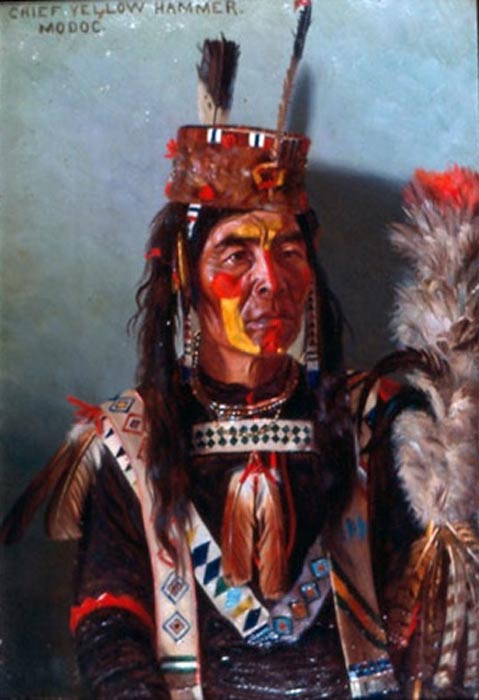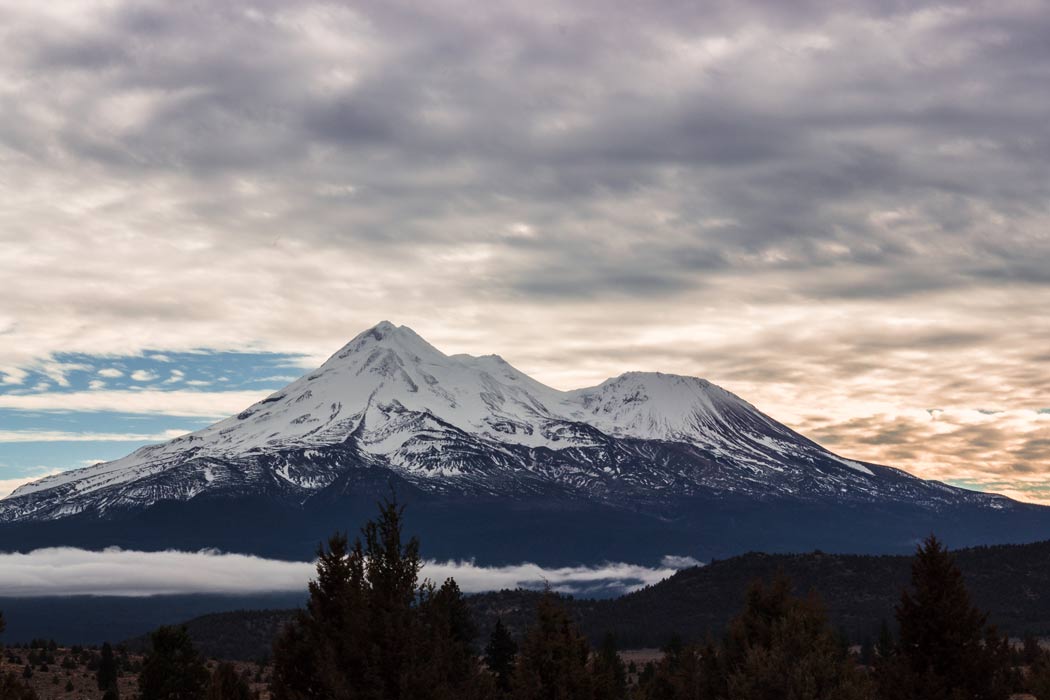Mount Shasta: Spirits and Danger on a Sacred California Mountain
Mount Shasta, located near the Oregon border in northern California, holds the distinction of being one of the world’s preeminent sacred mountains. It is recognized as an eligible Native American cultural and cosmological property on the National Register of Historic Places. Artifacts found in the surrounding area conservatively suggest at least 11,000 years of human habitation, designating this region as one of the longest-occupied areas of North America.
On a clear day, Mount Shasta can be seen from over 100 miles away (160 km). The mountain, part of the thousand-mile-long Cascade Range stretching from northern California to British Columbia, is one of the largest stratovolcanoes in the world, rising to an altitude of 14,179 feet (4321 meters); it is also part of a chain of volcanoes that encompasses the Pacific Basin’s notorious “Ring of Fire,” along which the majority of the planet’s earthquakes and eruptions occur.
The Constant Threat of a Volcanic Eruption
Geologists consider Mount Shasta to be a very dangerous, high threat volcano; someday it will wake up and erupt again, possibly during this century.
A volcanic eruption from Mount Shasta could match or exceed the scale of the 1980 eruption of Mount St. Helens. The effects of an eruption on the surrounding towns close to the base of the mountain are predicted to be catastrophic, and because volcanoes stay active for years after an eruption, the region may have to be closed off to the public for a very long time.
Mount Shasta’s fuse is already burning, and experts all agree, it’s not a matter of if Mount Shasta will erupt again—but when…

Sunrise on Mount Shasta. (CC BY-SA 2.0 )
Sacred Mountain
Throughout history mankind has always been drawn to mountains as a sacred feature of the landscape. It’s likely that mountains are among the oldest places of worship on the planet; the first temples. They figure prominently in the earliest religious myths of mankind, and our connection to them is so powerful that many of the world’s oldest monuments, such as the Egyptian and Mayan pyramids, were obviously built in their semblance.
- Deadly Volcanoes: The Eruptions that Reshaped the World and Became Legends – Part I
- Searching for The Gold of the Lost Dutchman Mine in Superstition Mountain
- They’re Alive! Megalithic Sites Are More than Just Stone
Northwestern California Native American tribes traditionally view Mount Shasta as being structurally and energetically connected to a wide range of important volcanic landscapes and mountains, which extend northwards and southwards of their tribal territories.
A primordial spiritual connection is believed to link all these energetically powerful sites together, including Mount Shasta, Lassen Peak, Lava Beds, Medicine Lake Highlands, Crater Lake, as well as many other lesser landmarks found throughout the region.

View of snow-capped Mount Shasta. (Joyce Marrero /Adobe Stock)
Pulses of human occupation surrounding Mount Shasta have been traced back to around the end of the last Ice Age, some 11,000 years ago, marking this area of northern California as one of the oldest continually occupied regions in North America. More recent discoveries suggest there may have been substantial human occupation along the northern California-Nevada border going as far back as 14,000 years ago.
Mythical Significance of the Monument
Mount Shasta’s vast antiquity and mythic relevance places its significance on par, historically and categorically, with other sacred sites found among the world’s oldest known civilizations, including the temples and pyramids of Egypt, Stonehenge, the Mayan pyramids, and Machu Picchu.
From a philosophical and spiritual standpoint, Mount Shasta is far more powerful and impressive than anything ever built by man. It is a Creator-made temple and monument, half a billion years old. In an abstract geological sense, Mount Shasta is still alive and under construction–and it will continuously erupt, regenerate, and change forms far into the future.

Beautiful Mount Shasta and Siskiyou Lake. (fenlio /Adobe Stock)
Native Americans have observed Mount Shasta as a sacred mountain from time immemorial; they viewed the mountain and its surroundings as holy ground; it is thought to be one of the first earthly places created by the Great Spirit. In the past, no one but medicine men or women climbed up the mountain beyond the tree line. It was thought to be too powerful for ordinary people to visit, and inhabited by hosts of potentially dangerous spirits and guardians who could harm a person who traveled up the mountain unprepared.
Mount Shasta’s significance as a “power spot” for non-indigenous people did not begin until the 19th century. The naturalist John Muir described the mountain’s peak as a religious icon, and helped to spread its legendary fame. Since its discovery, it quickly became one of California’s must-see tourist destinations.
There are many tangible and intangible qualities which make a mountain sacred, and some of these qualities go beyond its mere appearance. Mount Shasta isn’t the tallest mountain in the west, but it is the most legendary. A sacred mountain tends to possess unusual characteristics which are more than just the accumulation of natural processes.

Panther Meadows - Mount Shasta © Dustin Naef
There is, we feel, something different about a sacred mountain which cannot be easily explained, something that makes it exceptional. It possesses a kind of energy that’s unique to itself, which can be sensed and felt as much as seen. It draws people to it…inexplicably, mysteriously: “The power of such a mountain,” writes Lama Anagarki Govinda,
“is so great and yet so subtle that without compulsion pilgrims are drawn to the mountain from near and far, as if by the force of some invisible magnet, and they will undergo untold hardships and privations in their inexplicable urge to approach and to worship the sacred spot. Nobody has conferred the title of sacredness upon such a mountain; by virtue of its own magnetic and psychic emanations the mountain is intuitively recognized to be sacred. It needs no organizer of its worship; innately, each of its devotees feels the urge to pay it reverence.”
Anomalous Energies at Mount Shasta
All over the world there are places anciently known for their anomalous energies and mysterious phenomenon.
Today experts recognize that these “sacred sites” around the world influence human consciousness and other living organisms in a number of unusual and remarkable ways. They have become colloquially known as ancient “power spots,” places where people commonly experience unusual phenomenon such as UFO-related activity, portals into other dimensions, consciousness-altering experiences, and other paranormal-phenomenon.
When one enters into a sacred site of so-called “powerful energy,” the mind, body, and spirit are instantly affected. The energy at these places can be felt, sensed, dowsed, photographed, and measured with scientific instrumentation.
The spiritual use of these major “power spots” around the world is now beginning to be thought of as the unifying influence behind the rise of human civilization. Previously it was believed that spirituality arose only after mankind had already developed farming and villages, and religion was subsequently invented as a coercive means to promote social cooperation and control.
- Mountains of Silver: Tiny Bolivian village of Potosi was once the largest industrial mining complex in the world
- Monte Pindo: A Legendary Celtic Olympus from Ancient Galicia
- The Colorful Folklore Behind the Flaming Mountains of Turpan
It turns out, however, that this theory is completely backwards. Now it’s beginning to be understood that mankind’s spiritual awakening actually precipitated the rise of human civilization.

The Modoc are a Native American people who originally lived in the Mount Shasta area (northeastern California and central Southern Oregon, USA). Chief Yellow Hammer painted in traditional clothing by E.A Burbank, 1901. (Public Domain)
Humanity’s earliest spiritual experiences drew diverse groups of people to come together, who invariably clustered around the locations where most of the world’s major sacred sites and great spiritual centers exist to this day.
People came together at these sites for ritualistic and ceremonial purposes, and this, it turns out, created the need for people to form communities to grow food to accommodate the large populations gathering at these sites all over the world; and subsequently develop farming, villages, culture, and social cooperation.
Mount Shasta is one of these places; an ancient, sacred mountain pilgrimage destination – whose mysteries still call out to us from the past and continue to challenge our comprehension in the modern era.
Top Image: Mount Shasta in the clouds at sunset. Source: Jordan /Adobe Stock
By Dustin Naef
References
Lava Beds National Monument: History and Culture [Online] Available at: http://www.nps.gov/labe/historyculture/modochomeland.htm
Mount Shasta Fact Sheet, College of Siskiyous, 2005.
Native American Interview, Dorothea J. Theodoratus and Nancy H. Evans, College of Siskiyous, 1981-1984.
Deur, Douglas. In the Footprints of Gmukamps: A Traditional Study of Crater Lake National Park and Lava Beds National Monument, 2008.
Muir, John. Steep Trails (1918).
Than, Ker. (2013) National Geographic. Oldest North American Rock Art May Be 14,800 Years Old – [Online] Available at: http://news.nationalgeographic.com/news/2013/08/130815-lake-winnemucca-petroglyphs-ancient-rock-art-nevada/
Burke, John. Seed of Knowledge, Stone of Plenty. Oak Publishing, 2005.
Mann, Charles. The Birth of Religion. National Geographic Magazine, 2011.


















Comments
dont care what anyone says.. humans in north america go way back further than that.. loved your article.. always something new to learn. peace and love.
jolly r hansen
dont care what anyone says.. humans in north america go way back further than that.. loved your article.. always something new to learn. peace and love.
jolly r hansen
thank you, I enjoyed reading it a lot! It brought me back to the time I spent in the area and put a smile on my face because you described so many things that i'd felt there.
@JR. You sounds like another atheist running around picking on spiritual people. What's your problem? Of course it's a geological site, but, it is also very spiritual and I felt very spiritual when I climbed it in 2000. Not the best article ever, but no reason to start attacking the guy. Who cares if you live there, you act as if you own it because you live near it. LOSER.
Sorry. But you’re wrong. Everything in the article can be backed up if you look at the sources, even the so-called “anomalous energies”. Have a nice day.
Pages